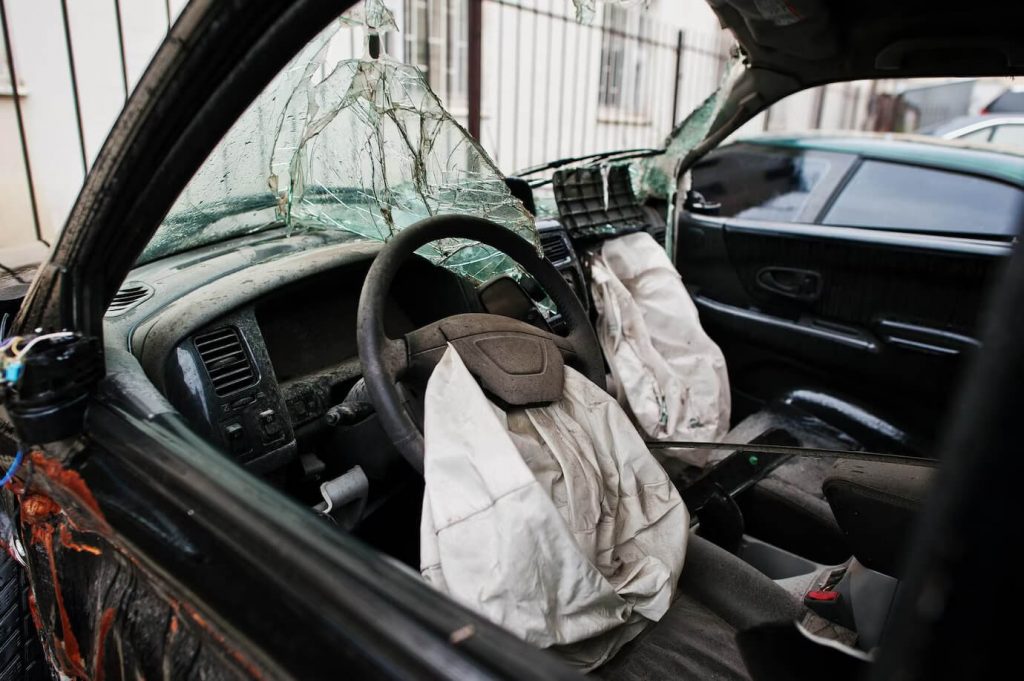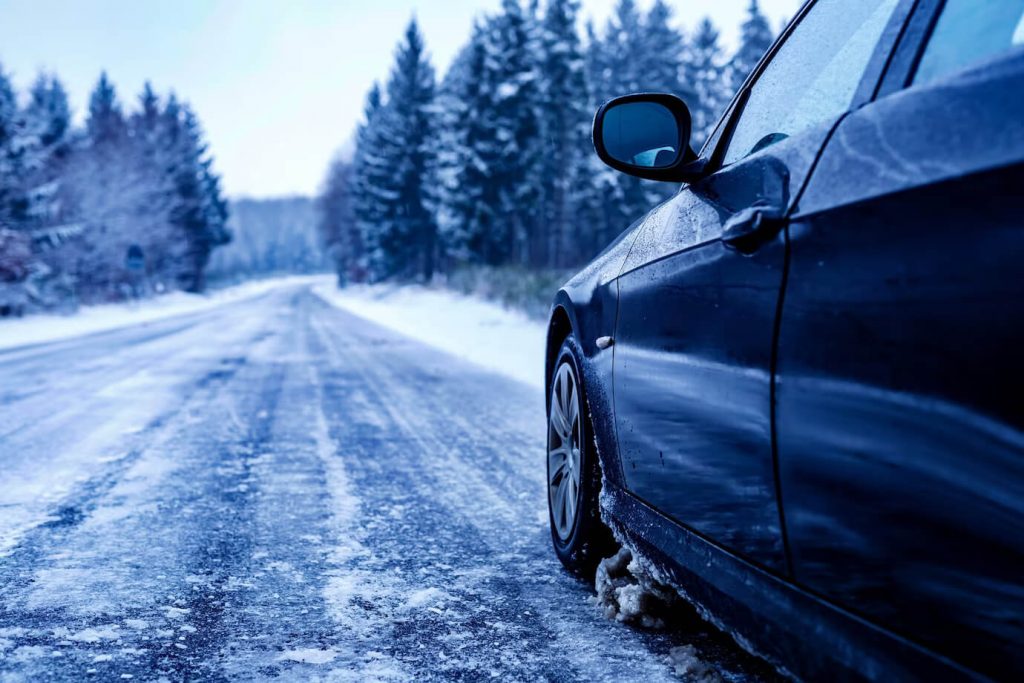Car crashes can happen suddenly and without warning, but there are crucial steps you can take to protect yourself and your loved ones on the road. Let’s delve into these road safety measures that can make all the difference.

Seat Belts: Your First Line of Defense
When you get behind the wheel, your first line of defense is the seat belt. Seat belts are designed to keep you securely in your seat, preventing ejection from the vehicle. In the event of a collision, they distribute the force of impact across your body’s strongest parts, significantly reducing the risk of serious injury.
Wearing your seat belt correctly is vital. Ensure it’s snugly fastened across your lap and shoulder, never tucked under your arm or behind your back. Remember, seat belts should always be worn, regardless of where you sit in the car.
Airbags: Your Second Line of Defense
Modern vehicles come equipped with airbags, another layer of protection. These lifesaving devices deploy upon impact to cushion your body from the hard surfaces within the car. However, to allow airbags to deploy effectively, it’s crucial to maintain a safe distance from the steering wheel and dashboard.

Proper Child Restraints
If you have children, their safety in the car is paramount. Use age-appropriate child restraints, including rear-facing car seats, forward-facing car seats, and booster seats, based on your child’s age, weight, and height. Always follow the manufacturer’s guidelines for installation and usage to ensure their safety during every journey.
Defensive Driving Techniques
Defensive driving is the key to accident prevention. Maintain a safe following distance from the vehicle ahead, providing ample reaction time. Exercise extra caution in adverse weather conditions, such as rain or snow, as roads can become slippery. Avoid distractions like texting or talking on the phone, as they divert your attention away from the road.

What to Do in the Event of a Crash
Despite your best efforts, accidents can still occur. If you find yourself in a collision, follow these steps:
- Stay Calm. Try to remain composed and assess your injuries.
- Check for Injuries. Ensure the safety of all passengers and call emergency services if necessary.
- Exit the Vehicle Safely. If it’s safe to do so, exit your vehicle and move to a secure location.
- Exchange Information. Share insurance and contact details with the other driver involved.
- Document the Scene. Take photos of the accident, including vehicle damage, road conditions, and any road signs or signals.
- Notify Your Insurance Company. Inform your insurance provider of the accident promptly.
By following these road safety measures and knowing how to react in the event of a crash, you can significantly increase your chances of surviving a car accident and keeping yourself and your passengers safe. Stay alert, drive defensively, and prioritize safety on the road.
Rainy Weather Driving
Rainy weather can significantly reduce traction on the road, making routine maneuvers challenging. To navigate safely during rain, consider these key points:
- Maintaining Adequate Speed. In wet conditions, your vehicle’s mass and inertia remain constant, but your grip on the road diminishes. To stay safe, reduce your speed and take turns more slowly than usual.
- Increased Following Distance. To compensate for reduced traction, leave more space between your vehicle and the one ahead. This extra room provides critical reaction time in case of sudden braking.
- Identifying Icy Spots. Sometimes, what looks like wet asphalt can conceal ice. Pay close attention and lightly tap your brakes before turning to test the road’s slipperiness.
Winter Driving Challenges
Winter brings its own set of driving challenges. To navigate safely in snowy and icy conditions, follow these tips:
- Practice in Controlled Environments. Use safe, open areas during winter months to practice handling your vehicle on snow and ice. Familiarity with your car’s behavior in adverse conditions is crucial.
- Increase Braking Distance. Just like in rainy conditions, maintaining a safe following distance is vital on icy roads. Anticipate stops and slow down well in advance to ensure you can brake safely.
- Beware of Hidden Ice. Winter roads may hide patches of ice beneath a seemingly clear surface. Exercise caution and test the road’s condition when in doubt.

Interacting with Other Drivers
Interactions with other drivers can be challenging. Here are some tips for safer interactions:
- Avoid Road Rage. Stay calm and patient, even when faced with aggressive or reckless drivers. Road rage can escalate situations and compromise safety.
- Yield the Right of Way. Defensive driving involves giving way when necessary. Even if you have the right of way, allow others to proceed if they seem unaware of the rules or appear in a hurry.
- Don’t Be a Teacher. Avoid trying to teach other drivers a lesson. Instead of confronting reckless behavior, it’s often safer to give way and avoid potential confrontations.
Navigating Intersections Safely
- Respect Traffic Signals. Always obey traffic signals. Running a red light or ignoring stop signs can lead to disastrous consequences. Approach intersections with caution.
- Maintain Vigilance. Approach intersections with heightened awareness. Look for signs of vehicles potentially running red lights or failing to yield the right of way.
- Prepare to Brake. Recognize that intersections are high-risk areas. Remove your foot from the accelerator and have it poised over the brake pedal in case quick reactions are needed.
Navigating Heavy Traffic
Urban driving often involves heavy traffic. Here are strategies for maintaining composure and safety:
- Stay in Your Lane. Avoid unnecessary lane changes in heavy traffic. Frequent lane changes can increase the risk of collisions.
- Anticipate Lane Changes. Be aware of other drivers signaling lane changes. Give them space and allow them to merge safely.
- Use Mirrors Actively. Regularly check your side and rearview mirrors to stay aware of your surroundings, including potential blind spots.
The Perils of Distracted Driving
Distracted driving is a growing concern. Here’s how to combat this dangerous habit:
- Cell Phones Off. Turn off your cell phone or place it in a secure, hands-free holder while driving. Texting, browsing, or talking on the phone diverts attention from the road.
- Eat and Drink Responsibly. Snacking or drinking while driving may seem harmless, but these activities can divert your focus. Finish your snacks or drinks before hitting the road.
- Set GPS Before You Go. If you’re using GPS for navigation, set your destination and route before driving. Fiddling with GPS settings while driving is a significant distraction.
In a crisis, maintaining composure is vital. Panic can cloud your judgment. Take a deep breath, assess the situation, and act accordingly.

Navigating Challenging Road Conditions
Adverse weather conditions and challenging road situations require specific precautions for safe driving. Whether you’re dealing with rain, snow, fog, heavy traffic, or nighttime driving, these tips can help:
- Reduce Speed. In wet, icy, or foggy conditions, slow down. Reduced visibility and slippery roads demand cautious driving. Maintaining a safe speed can provide vital reaction time in case of unexpected obstacles.
- Increase Following Distance. Leave extra space between your vehicle and the one ahead. This additional room can be crucial for sudden stops or maneuvers, especially on slippery surfaces.
- Stay Alert. Pay close attention to road conditions, even if they seem normal. Black ice or hidden hazards can catch you off guard. Maintain vigilance, especially when approaching intersections.
- Manage Road Rage. Keep your composure in heavy traffic or when encountering aggressive drivers. Avoid confrontations, focus on your safety, and maintain a calm mindset.
- Regular Maintenance. Ensure your vehicle is in top shape. Regularly check tires, brakes, lights, and signals. Proper maintenance contributes to both your safety and that of others on the road.
- Nighttime Driving. Adjust your headlights properly to minimize glare and improve visibility. Reduce speed and be cautious, as reduced visibility and potential fatigue can make night driving riskier.
Remember, safe driving is an ongoing commitment to protect yourself, your passengers, and fellow road users. These tips will help you navigate various challenges and contribute to safer roads for all. Stay tuned for more informative articles on our blog, where we’ll continue to provide valuable tips for responsible and safe driving.

